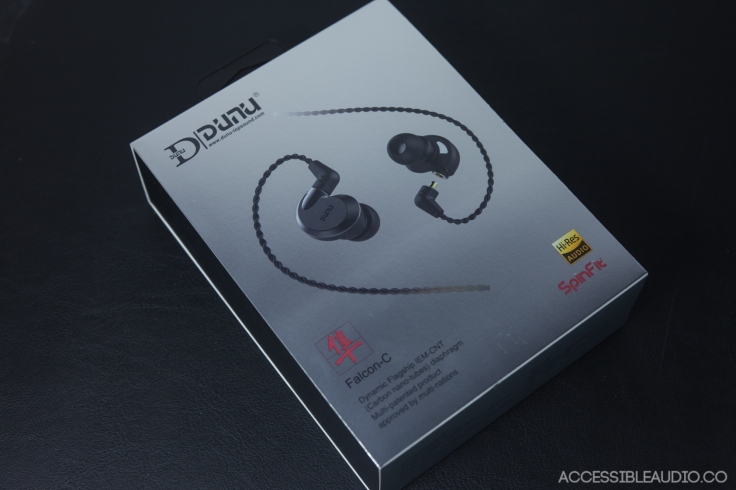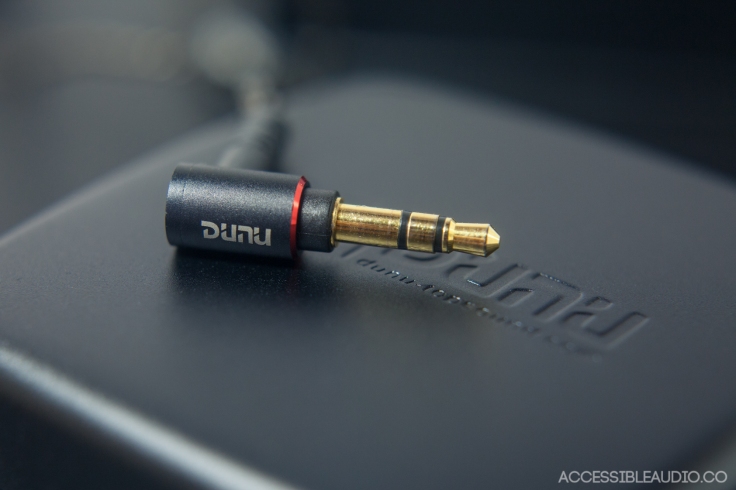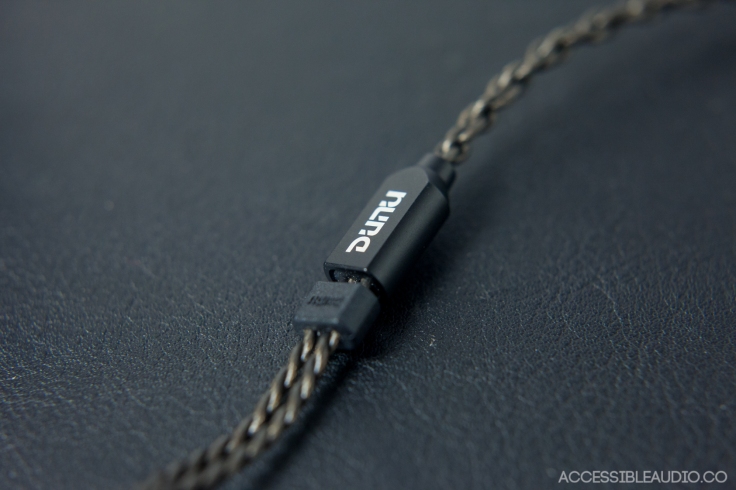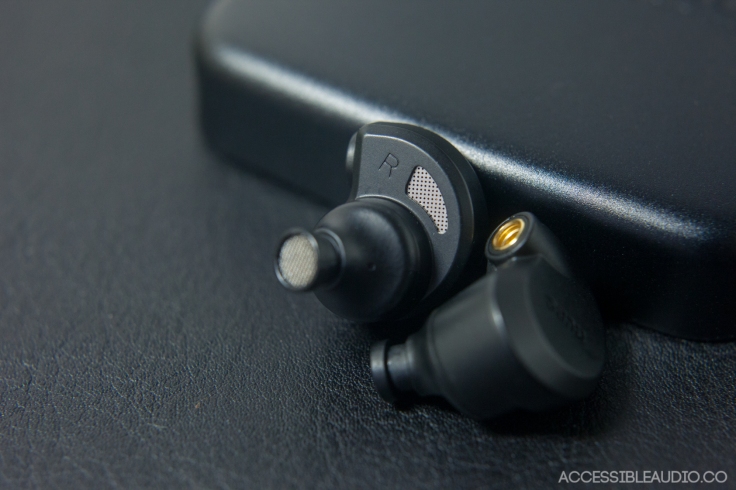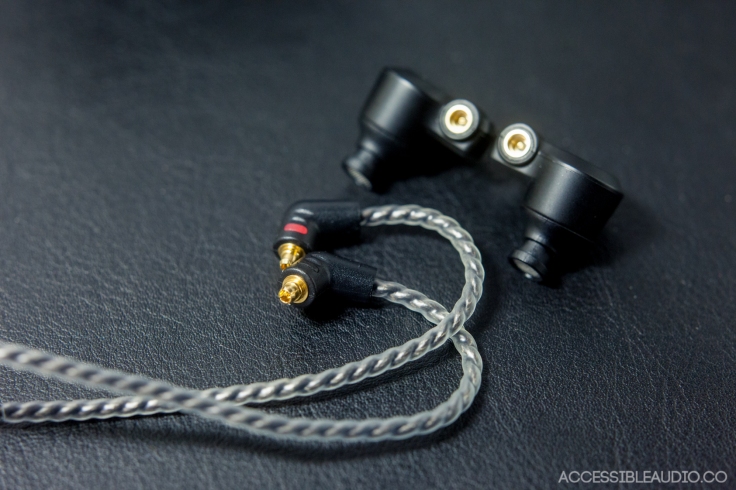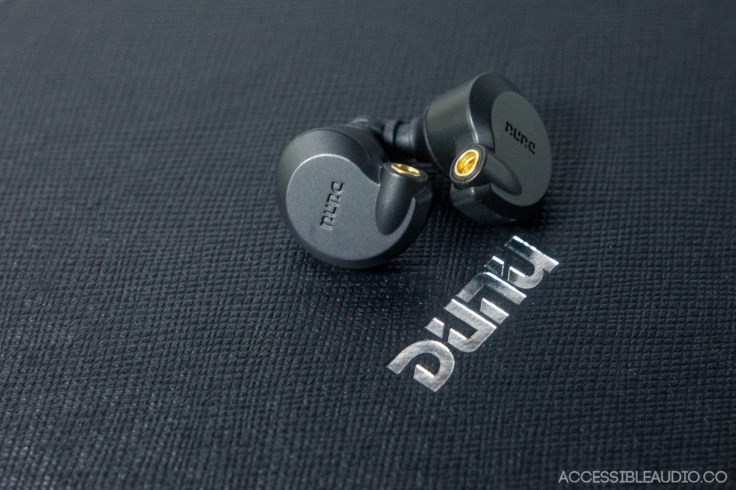Link to my review and measurement index thread where one can also find a full review overview, more information about myself as well as my general-ish audio and review manifesto:
https://www.head-fi.org/threads/956208/
I only give full stars. My ranking/scoring system does not necessarily follow the norm and is about as follows:
5 stars: The product is
very good and received the "
highly recommended" award from me.
4 stars: The product is
very good and received the "
recommended" award from me.
3 stars: The product is
good/very good, but not outstanding/special enough to get any of my two awards. ["Thumbs Up"]
2 stars: The product is
only about average or even somewhat below that and
somewhat flawed/flawed in some areas. [neither "Thumbs Up" nor "Thumbs Down"]
1 star: The product is
bad/severely flawed to
outright bad. ["Thumbs Down"]
DUNU Falcon-C
Source:
Review sample.
Miscellaneous:
The unboxing experience with many accessories is nice, as is the large ear tip selection.
The carrying case’s lid unfortunately fits somewhat too loosely and may unintentionally come off easily, in addition to appearing too thin to be considered premium.
I really like the design.
High build quality.
High quality cable but also slightly rubbery.
Sound:
Largest included SpinFit ear tips.
Tonality:
Bright/edgy or v-shaped, depending on whether the front cavity vent is blocked or not.
For what it is worth, at first, the ear tips that I used were the largest included grey silicone tips – the dark grey ones with blue stem just didn’t want to provide a nice and easy seal for my ear anatomy. Then and for all comparisons, I however switched over to the included SpinFit tips, even though I personally generally don’t like them, but in case of the DUNU they reduce the somewhat sharp treble edge a bit to my ears.
The Falcon-Cs’ sound is quite fit- and insertion depth-dependant – depending on fit and insertion depth, especially their treble output might vary rather noticeably. Especially the latter is affected quite a bit depending on individually different insertion depth, wherefore the in-ears might show a tendency to sound edgy and sharp in some ears and only moderately bright in others. In my ears and with my ear anatomy, the first is rather the case.
Depending on one’s individual ear anatomy, the small front cavity vent might remain either free (which results in a mild bass boost of ca. 5 dB compared to in-ears that have a nearly diffuse-field flat bass, such as the Etymotic ER4SR/ER-4S) or will be completely blocked. A sub-bass difference of ca. +6 dB (to total up to a bass boost of ca. 11 dB) compared to a fully open vent would be the case with a blocked front vent, with the sub-bass being the strongest area – in my ears, the vent remains rather free, and what I am hearing is a boost of ca. 7 dB, mainly taking place in the upper bass and midbass, with the sub-bass being slightly behind in quantity but not lacking either.
This elevation stays nicely out of the vocal range and fundamental range wherefore the Falcon-C are no thick or full sounding in-ears, which is because the elevation starts to climb at 500 Hz and reaches its climax right below 100 Hz.
Mids are, which is nice, on the flat and neutral side, although they aren’t the closest in the mix due to having lesser quantity compared to the bass and highs in the presence range, but they also do not necessarily appear hollow or thin as it can be the case with in-ears that are on the brighter side in the highs. Yes, voices are rendered with fairly correct but rather relaxed timbre, and the Falcon-C avoid the 3 kHz upper midrange glare/presence range forwardness that some of DUNU’s other models have.
Not exactly the same is what I would say about the treble – it is generally on the brighter side, and while it isn’t necessarily intrusively peaky, it can come across as a edgy due to a forward 6 kHz range, as well as emphasised 8 kHz, 12.5 kHz and 16 kHz, the latter two obviously being in a less important area (although that 12.5 kHz lift definitely adds audible air and subtle super treble extension and glare to the sonic presentation).
Out of these, the 8 kHz lift is unproblematic, but the 6 kHz emphasis is definitely a bit too pronounced and therefore introduces some sharpness and an unnatural edge to the sound.
While the sound is perhaps not exactly unpleasant, treble-sensitive people should certainly look elsewhere, and the treble presentation, especially cymbals, gains a somewhat unnaturally metallic and sharp edge due to that elevation, which ultimately leads to an unrefined appearing treble presentation.
Frequency Response:
Etymotic ER-4S-Compensation (free Vent)
That’s pretty much how I perceive the sound in my ears, with the actual super treble elevation however being milder and the upper treble peak being perhaps a little less extreme, although not by much.
Etymotic ER-4S-Compensation (blocked Vent)
InEar ProPhile 8-Compensation (free Vent)
InEar ProPhile 8-Compensation (blocked Vent)
Effect of Blocking the small Front Cavity Vent
Resolution:
The Falcon-C deliver about just what one would expect from technically capable dynamic driver in-ears in this price range – a pretty tight, clean and fast bass for dynamic driver standards, a detailed midrange with good speech intelligibility, a well-separated and detailed treble and precise instrument separation.
Unfortunately though, the tuning with the too early and too string treble peak doesn’t really fit in.
There isn’t any area that really lacks behind the rest, and the details appear distributed quite evenly, and not much surprisingly for single-driver in-ears, the Falcon-C sound coherent.
Given that the Titan series in-ears however already performed exceptionally well for dynamic driver in-ears at their price point, the Falcon-C don’t have much room for further technical improvements and only appear slightly tighter in the lows in comparison and have got just a small edge in terms of midrange details – on the whole, their level of detail retrieval is quite similar.
Soundstage:
The imaginary room the Falcon-C present is quite spacious and appears open – not as much as the Titan 1, but still a bit more than the Titan 5.
Therefore the stage’s width definitely subjectively exceeds the base between my ears, with some spatial depth as well, although the general soundstage seems rather oval, almost elliptical, than circular.
Instrument separation is precise and clean and just as good as on the Titan series in-ears while it doesn’t fully reach the level of good multi-BA in-ears.
- - - - - - - - - - - -
Comparisons:
DUNU Titan 5:
The Titan 5s’ sound, especially bass and warmth, will also depend on individual ear anatomy and by how much its vent is covered. Unlike with the Falcon-C, I am one of those people who are lucky and get a good fit and seal with them, with rather covered but not fully blocked vents, hence the sound doesn’t lack bass or warmth and isn’t overly thin despite having bright highs.
That said, the Titan 5 are a bit more elevated in the bass, especially with the stronger sub-bass emphasis. The also have got a bit more body and warmth in the lower fundamental range to my ears.
High upper mids are more linear and neutral on the Falcon-C whereas they are a bit lifted on the Titan 5.
While the Titan 5 are actually even brighter in the highs, their treble appears less edgy and slightly smoother to my ears, perhaps because of them having more lower midrange body.
In direct comparison, the bass appears slightly tighter on the Falcon-C, which is likely due to the Titan 5 having more presence in the lower fundamental range. Speed and control are similarly good and neither of the in-ears have problems handling complex and fast bass lines.
Both resolve and separate equally well in the highs.
In the mids, both are rather close, but to my ears the Falcon-C are just a notch above the Titan 5 when it comes to small midrange and vocal details.
Both have got a rather comparable soundstage to my ears with the Falcon-Cs’ sounding just slightly more open. None of them match the Titan 1s’ large and open sounding soundstage, though.
iBasso IT01 (first Generation with non-replaceable Nozzle Filters):
The IT01 have got the stronger bass and sub-bass elevation, with a warmer lower fundamental range lift.
Midrange timbre is comparable with the IT01 having just a little more openness in the upper mids.
The IT01 are also a bit on the brighter side in the highs, however they are more linear and less intrusive here and therefore audibly a good bit more realistic in the middle treble in comparison, and they lack the 6 kHz stridency the DUNU have (while being a bit too forward around 5 kHz).
Bass speed, tightness and control are equally good on both in-ears.
When it comes to minute midrange details, the DUNU are just slightly ahead.
Treble separation on the other hand is a bit cleaner on the iBasso in comparison.
The DUNU have got the somewhat more open, wider soundstage to my ears while the IT01 have got a bit more spatial depth.
In terms of separation and imaging, the IT01 is slightly more precise.
Sennheiser IE 800:
The IE 800 are more boosted and warmer in the bass than the Falcon-C, with the more pronounced sub-bass, and have got the somewhat more forward, thicker sounding lower fundamental range.
Midrange timbre is comparable between the two in-ears.
Where they differ though is the highs – the Falcon-C are bright and a splashy in the middle highs, an area where the IE 800 are relaxed, whereas the Sennheiser are tuned for a bright and splashy upper treble presentation, which is definitely a tuning that is much less intrusive, unnatural and edgy compared to a mid-treble elevation such as the one that can be found on the DUNU.
The Sennheiser seem slightly softer in the bass in comparison, while having just a tad more control with fast and complex tracks.
In the mids and highs, the Sennheiser are minimally ahead when it comes to minute details, but the difference is ultimately rather small.
The Sennheisers’ soundstage appears even a bit wider to my ears, however with less depth. Separation is quite similar.
Conclusion:
Nice design and build quality with decent technical performance for dynamic driver in-ears, however the unnatural, peaky treble tuning with its too early and too strong peaks without enough lower midrange counterweight ruins the presentation quite a bit, especially with excellently tuned and at least similarly well dynamic driver in-ears from Etymotic or Moondrop existing as alternatives.
Photos:































